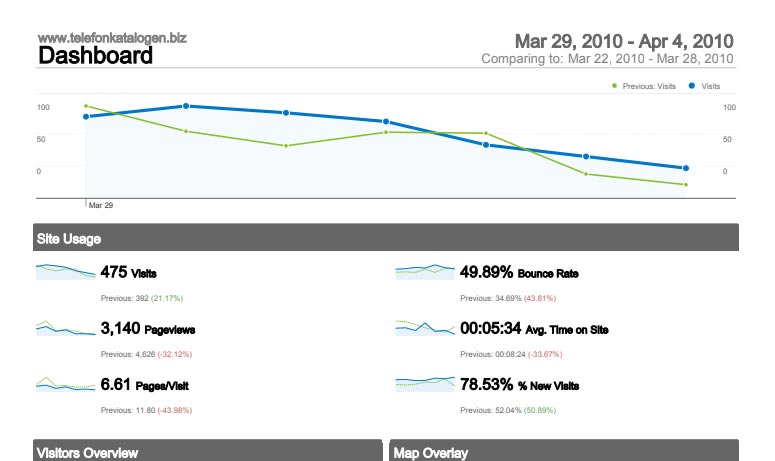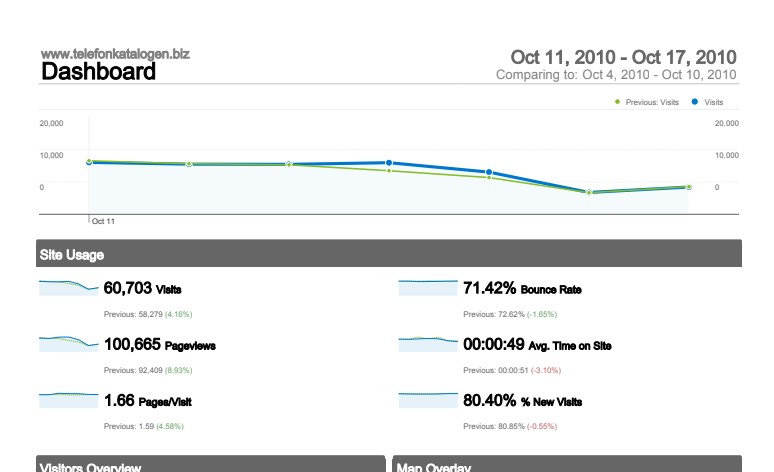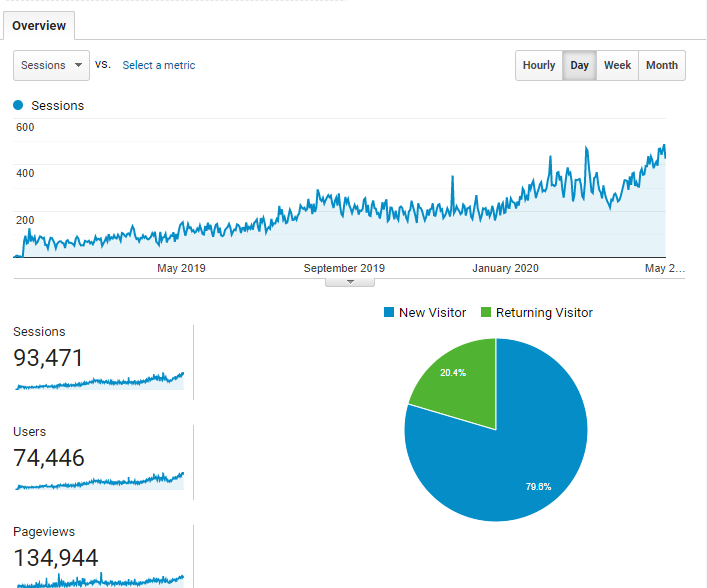Content marketing is a beneficial way to establish your brand, grow your audience, and increase awareness of your services.
But how do you know if it’s working?
Your content marketing ROI should be profitable.
The first step in measuring content marketing ROI is to define success metrics for the campaign.
This will help you gauge whether those goals have been reached by analyzing the data that goes along with them.
One example of an effective success metric may be increasing email subscribers by 10%.
To measure this metric, we can look at a report showing how many new subscribers were acquired over time. Then, compare this number against other benchmarks such as previous months’ averages—also, industry standards (e.g., 20% higher than benchmark).
Many business owners struggle to measure their return on investment from this marketing.
That’s because there are no hard-and-fast rules about measuring ROI when it comes to content marketing.
Table of Contents
What is content marketing?
Content marketing is the process of developing, distributing and marketing content that attracts and retains a defined audience.
It can be anything from short videos on YouTube to blogging posts.
Also, other social media sites, to infographics distributed through email campaigns. Content will cover topics relevant to your target group. Still, it needs an element of personalization for people to feel like they know you as well as their friends do!
Content Marketing refers to producing information (e.g., movies).
It is often aimed at targeted audiences to keep customers/clients who have been exposed.
Your tone should be informative as you discuss what it takes to create engaging content. Doing this will resonate with your audience on various channels.
Content marketing includes starting a blog, writing blog posts or landing pages.
- They intend for publication in trade publications as well as websites.
- The main goal being building brand awareness.
- Besides, establishing thought leadership rather than generating direct sales leads.
Why you should measure content marketing ROI?
Many companies wonder when to measure their Return on Investment (ROI) from Content Marketing. It may seem that measuring site traffic and social media likes and sales leads is proof enough. Else, in reality, these numbers do not state the actual value.
The accuracy of your metrics will depend on what you’re measuring.
But without knowing the earnings your marketing efforts are bringing in, it isn’t easy to understand how valuable they might be.
If you’re tracking your content marketing results, it becomes easier to rank and value your activities. This will help you determine the marketing ROI for a content project, which is critical to:
- Getting the approval for your marketing plans
- Suppose you are in charge of marketing within your organization. Content marketing is challenging to enhance your customers’ experience.
- Improving your sales conversations
- Convince your leadership to invest in content marketing
Stakeholders might not understand the intricacies of your content marketing strategy. Otherwise, they do understand ROI. And as you know better than anyone, the key to influencing people is to speak their language.
How to measure your content marketing ROI
There is a single foolproof strategy for measuring the effectiveness of your content marketing. It depends on set goals and what metrics you are tracking. Establishing a direct connection between how much money is spent on advertising the product. Also, service and how much revenue was made because of that expenditure is difficult but not impossible.
A fundamental way of calculating return on investment in content marketing is:
- Calculate your spending. This is the investment part of your equation and should include everything from how much money you spend on your marketing team. To how much money you spend on various platforms and tools.
- Calculate the value of conversions. The ‘return’ part of your marketing campaign is a tricky one to measure. If you manage an e-commerce site, the return cost will depend on the number of people who purchase your service. This is after clicking through your ads. If you have a more complex buying process, you might want to consider using the submissions as one of your critical data points. The basic idea is to multiply the number of conversions and sales by their respective values. This helps to reach an average conversion value. We did say that this would be tricky.
- Isolate those conversions. This step aims to identify which of the conversions were generated by your content marketing efforts. One can do this by looking at metrics like the site’s organic traffic and referrals from social media. To calculate your ROI from content marketing, you should come up with several conversions attributed to it. Multiply this number by its conversion value (see Step 2), and voila—content marketing ROI.
Why you should care about measuring your content marketing ROI
Content marketing is a hot topic, but many brands don’t measure their ROI. Have you been able to quantify the success of your content?
Frequent measurement can be difficult as there are so many variables at work in successful content campaigns. Due to this, it’s hard to tell which efforts might have affected sales or customer engagement. The study found that “the top 10 percent of marketers who monitored and analyzed metrics built 3-5x more business than those who did not.” It may seem like an extra chore, but regular tracking will keep everyone accountable for delivering excellent results!
Five benefits of measuring your content marketing ROI
Measuring your content marketing ROI can help you determine the effectiveness of your strategy. Moreover, make adjustments as needed.
The benefit of measuring your content marketing ROI is that it lets you know how effective different strategies are, which allows for changes to be made or implemented on what’s not working.
1. Generates more leads
Content marketing can also generate leads. When your audience views the content, you are providing, understanding that you know what you’re selling. They will trust your judgment and be more likely to purchase from you in the future.
Content marketing and lead generation go hand-in-hand. Not only does it encourage new leads to visit and buy from your company, but it can also help you establish credibility.
Understand the context of the original text before rewriting it to meet its aims. You can create content that provides valuable and accessible information to the persona by solving their problems or meeting a need.
2. Increases retention
Why are infographics, eBooks, and case studies such valuable assets for companies? Such content reinforces positive branding—also, the ability to create an enjoyable experience for potential customers. A study from Hubspot showed that users who read at least one piece of long-form written content in a given month were more than four times likely to purchase products or services from the company. This is in compares it to those who did not consume any digital text during this period.
Insightful data like these can help you build better relationships over time as your prospective customer base grows.
3. Enhance SEO efforts
Essential parts of your website that affect user experience will impact its relevance in search engines.
When you create content relevant to your audience and provide the information, they are seeking. Search engines recognize your site’s value. Additionally, search engine algorithms find content on your site far easier and quicker to identify. This is the case compared to areas without solid content.
If you want to expand your audience, you must offer an easy-to-access page and security features. Also, make sure your content is authentic.
4. Increases trust with the audience
One of the key ways to create content that your audience will love is completely removing any expectation for a return. When designing with this intention, you’re more likely to build trust relationships. Besides, establish deep consumer connections. Moreover, providing them value without worrying about what they’ll do in exchange. This is something that can happen when it’s created from an outward perspective instead.
This kind of relationship sets up opportunities for some great experiences on both ends too! Consumers feel comfortable reaching out if there are issues or concerns because their needs have been met. Even if those needs were as simple as providing information through the creative process itself, the production tone should be informative.
5. Builds authority
As they age, people research and find information on the internet. The more authoritative your website is to a human or search engine, the higher you’re ranked.
The fastest and most effective way to build authority is providing value to your audience’s questions. Moreover, guiding them to better experiences and making them aware you have expertise.
Examples of how to measure your ROI
There are endless ways to measure your ROI (return on investment). One of the practical and popular techniques is content marketing. By measuring how many clicks, you receive for each article or blog post. And what search engine optimization terms people use when they find your site through Google’s algorithms.
Also, who visits a website. Furthermore, any other data analytics tools could help determine whether an advertising campaign successfully drove traffic. Businesses can calculate their return from every dollar spent using this technique. More companies will use content Marketing than ever before. Reasons because it allows them to identify where potential customers live online. Due to this, they know which channels are best suited for reaching those prospects.”
Tips for measuring the success of a campaign
Designing an advertising campaign is a challenging task. Campaigns are evolving and adapting to the ever-changing landscape of technology, media consumption habits. Also, geopolitical events, competitive forces in your industry – and more. The best way to measure success with any given campaign may be different from what has worked before. What is working now because campaigns must adapt as time passes by making them difficult to predict from one week or month to another. But exists some guidelines that might help you understand if something isn’t going right: does this ad make sense? Is anything unclear about why we need this product? Have I done my due diligence on how people find out about our product (or service)?
For online marketing campaigns, success can be measured in a variety of ways. One way counting the number of followers and views on social media platforms like Facebook and Instagram. Another metric for measuring success could be how many people signed up for your email list—else, subscribed to receive updates from you through an RSS feed. The key here is not focusing on one measurement but instead looking at them all. They each provide different insights into what might have gone right (or wrong).
Mistakes made when they’re trying to measure their success with a campaign
The three biggest mistakes you can make when measuring your success in content marketing
“What is my click-through rate?” “How many followers do I have on social media? And how often are they posting to their feed?” The difference between these questions and what should be asked, such as “Did our campaign increase awareness of hatthis issue,.” Besides, “Is there an uptick in traffic from new visitors following a call-to-action we ran for one week after publishing?” highlights what people get wrong about measurement.
The first two metrics don’t represent whether someone was convinced by your message enough to take action. That’s why it matters if engagement with posts increases over time.
Conclusion
If you’re thinking about measuring the ROI of your content marketing strategy, there are a few critical metrics for measuring success. First is total traffic – what number of visitors do you get per week or month? Another important metric would be leads generated from these visits. This could include sign-ups on an email list, subscriptions to your newsletter. Moreover, contact forms are filled with information about their business needs. Any revenue attributed to this increased exposure should be considered part of the ROI measurement process. Which one(s) have been most helpful in evaluating your content marketing efforts so far?
FAQs
How do you measure success in content marketing?
Content Marketing Metrics to Measure Success: Web Traffic by Source/Medium. For many content marketers, site traffic is a crucial metric come reporting time. User Behavior. On their own, user behavior metrics don't tell you much. Impressions & CTR. Content Shares & Backlinks. Keyword Rankings. Lead Generation.
How will you measure Content marketing ROI?
It is done by subtracting the initial value of an investment from the final deal, then dividing it by the investment cost. This percentage represents how much money was made on a particular asset than what you put into it. Multiplying this percent with 100 will give you the ROI number (percentage).
How is the content value measured?
There are several ways to measure and realize the value in your content Have a (sound) content strategy that includes governance. Know how customers are engaging with your content. Know what role your content plays in keeping a user on your site. Know if your content is leading to business outcomes. Put your strategy into action!
What is the ROI formula?
In business, a key metric to determine the profitability of an investment is the Return on Investment or ROI. It can be calculated by dividing Net Profit over Cost of Investment times 100.
What are content values?
Value-added content. Is any exclusive, original, or unique information your audience can't find anywhere else. This added content, including videos, case studies, and research findings. Also, other similar educational value features can help increase customer interest and engagement.
What is the ultimate measure of marketing success?
To measure marketing success. Most businesses focus on looking at the number of sales and company profit. Besides, building brand recognition.
Is ROI the same as profit margin?
The difference between profit margin and return on investment is that ROI examines the investment value. In comparison, a profit margin calculation breaks the cost and sale price.
How can I improve my content performance?
Things to Improve Your Content Performance Use keywords on the target audiences on search intent. Make your headlines irresistible AND helpful. Improve your writing flow. Include crucial, exciting images to illustrate your points. Show the value immediately. Create a clickable CTA.
What is a 100% ROI?
If your ROI is 100%, you've doubled the initial investment. Calculating ROI helps you weigh your options when comparing two potential alternatives. When you deposit money in a savings account, the bank will pay you interest for holding your funds with them. What type of marketing has the highest ROI? Marketing through email Email marketing has been described as the highest-ROI online marketing strategy when executed.
How do you measure success in content marketing?
Content Marketing Metrics to Measure Success
- Web Traffic by Source/Medium. For many content marketers, site traffic is a crucial metric come reporting time.
- User Behavior. On their own, user behavior metrics don’t tell you much.
- Impressions & CTR.
- Content Shares & Backlinks.
- Keyword Rankings.
- Lead Generation.
How will you measure ROI?
It is done by subtracting the initial value of an investment from the final deal, then dividing it by the investment cost. This percentage represents how much money was made on a particular asset than what you put into it. Multiplying this percent with 100 will give you the ROI number (percentage).
How is the content value measured?
There are several ways to measure and realize the value in your content
- Have a (sound) content strategy that includes governance.
- Know how customers are engaging with your content.
- Know what role your content plays in keeping a user on your site.
- Know if your content is leading to business outcomes.
- Put your strategy into action!
What is the ROI formula?
In business, a key metric to determine the profitability of an investment is the Return on Investment or ROI. It can be calculated by dividing Net Profit over Cost of Investment times 100.
What are content values?
Value-added content. Is any exclusive, original, or unique information your audience can’t find anywhere else. This added content, including videos, case studies, and research findings. Also, other similar educational value features can help increase customer interest and engagement.
What is the ultimate measure of marketing success?
To measure marketing success. Most businesses focus on looking at the number of sales and company profit. Besides, building brand recognition.
Is ROI the same as profit margin?
The difference between profit margin and return on investment is that ROI examines the investment value. In comparison, a profit margin calculation breaks the cost and sale price.
How can I improve my content performance?
Things to Improve Your Content Performance
- Use keywords on the target audiences on search intent.
- Make your headlines irresistible AND helpful.
- Improve your writing flow.
- Include crucial, exciting images to illustrate your points.
- Show the value immediately.
- Create a clickable CTA.
What is a 100% ROI?
If your ROI is 100%, you’ve doubled the initial investment. Calculating ROI helps you weigh your options when comparing two potential alternatives. When you deposit money in a savings account, the bank will pay you interest for holding your funds with them.
What type of marketing has the highest ROI?
Marketing through email
Email marketing has been described as the highest-ROI online marketing strategy when executed. 67% of businesses report that email is their highest earner and the most effective promotion for retaining customers.
Share This Story







